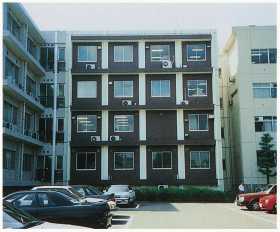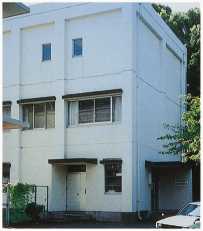
|
|
The Institute of Tropical Medicine, Nagasaki University was originally
founded in March 1942, as the East Asian Research Institute of Endemics, in
order to perform basic and applied studies on endemic diseases in East Asia.
At the beginning, most of its research activities were field studies in mainland
China, performed by several department such as Pathology, Bacteriology, Internal
Medicine and Dermatology of Nagasaki College of Medicine. Unfortunately, all
the facilities and research materials were completely destroyed instantaneously
along with the Medical School by the
atomic bomb which exploded on August 9th, 1945. As a result, development
of the institute and its research activities were severely inhibited.
In April 1946, the institute was named as the Research Institute of Endemics
attached to Nagasaki College of Medicine, and moved to Isahaya City in May in
order to resume its research activities. In accordance with the Act on the Foundation
of National Schools in May 1949, the institute was renamed as the Research Institute
of Endemics, Nagasaki University. Becauce of the severe flood in Isahaya City,
the construction of the new building in Sakamotomachi, Nagasaki City was started
in 1960, and the institute moved to new building in April, 1961. At that time,
there were only two departments, Pathology and Clinics, however, since 1964, new
departments were established every Year, such as Epidemiology, Parasitology, Virology
and at the end of 1966, the first extension of the building was completed.
In June 1967, according to the partial alteration of the Act on the Foundation
of National Schools, the name of the institute was changed to the present one,
in order to perform basic as well as applied studies on tropical medicine. At
the same time, the Department of Internal Medicine of the institute with 20 bed
facilities was opened in the University Hospital. In 1974, Department of Bacteriology
and Reference Center as an attached facility were opened. In 1978, the Department
of Preventive Medicine suppoeted by visiting staff and the Training Course of
Tropical Medicine were started. In 1979, Ward of Infectious animals became Animal
Research Center. In March 1980, the 2nd extension of the main building was concluded.
In September 1983, the Training Course in Research for Tropical Medicine by JICA
was opened. In 1984,Department of Protozoology was established. In July 1985,
the 3rd extension of the building was completed. In 1987, Department of Medical
Entomology was established. In 1989, the institute was reorganized to a collaboration
research institute. In 1991, Department of Biochemistry was added. In March 1994,
the 4th extension of the building was completed, and in April, 1994, the institute
was reorganized to 3 research fields, Tropical Microbiology, Pathogenesis and
Clinical Sciences, and Environmental Medicine, with addition of 2 new research
departments, Thermal Adaptation and Social Environment, and the institute has
12 research departments at present. In 1995, the Institute was designated as one
of the "Centers of Excellence" in the forefront of scientific research.
In 1996, a new research department, Molecular Epidemiology, was established under
the Research Field of Microbiology to invite an overseas visiting professor. In
1997, the Reference Center was abolished and in its place the Information and
Reference Center of Tropical Medicine was established, symbolizing continuous
consolidation and re‐organization of the Institute.

The 3rd and 4th extension building including Information and Reference Center of Tropical Medicine, The Institute of Tropical Medicine, Nagasaki University
 Animal
Research Center
Animal
Research Center